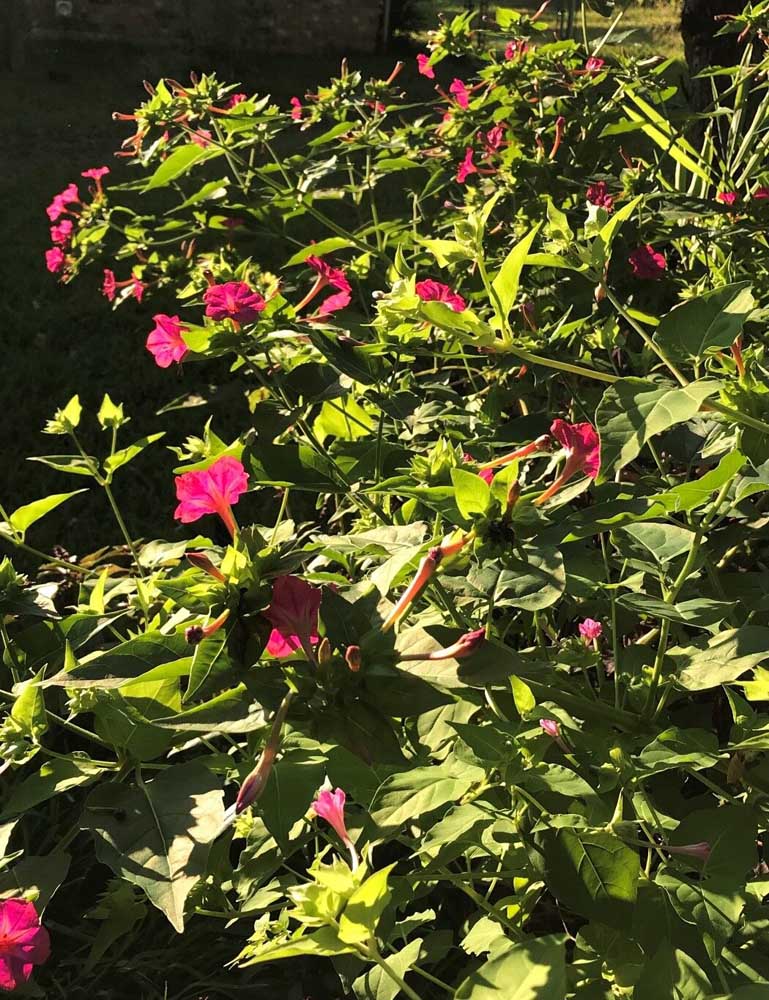My experience with four-o’clock flowers
Published 3:47 pm Wednesday, February 1, 2023

- Four-o’clocks
When we moved into our house, it came with a half-acre yard. Thirty years passed and before we realized, our trees grew into towering giants encompassing our back yard. The four-o’clock turns out to be the perfect flowering plant for our mostly shady yard.
The four-o’clock (Mirabilis jalapa), meaning “wonderful of Mexico or Guatemala” grows in shade, partial shade, and full sunlight. It grows as a bush approximately three feet tall. However, in the shade, our plants can grow twice as tall. In all light conditions and at four o’clock in the afternoon the bush blooms fragrant tubular shaped flowers in multiple colors of hot pink, light pink, white, bright yellow, pale yellow, and variegated colors. New blossoms open each day, but last only a day. The blossoms close during mid-morning droop over, turn black, and remain on the plant. The spent blossoms stay there until a seed matures from its base. Blossoming continues from late spring until the first frost. We enjoy this plant’s constant colorful display in all areas of our yard.
Four-o’clock are easy to grow. In zone nine, where we live, they are both perineal, coming back each spring from their underground tubers, and annual, sprouting new plants from their scattered seeds. We leave the plant alone in the winter knowing that it will grow a new stalk, branches, and foliage in the spring. Additionally, this easy-care plant requires watering usually once a week. But, if the temperature soars into heat warnings, above ninety-six degrees, they perk-up with an additional watering. Moreover, they require no fertilizer or special soil to grow and bloom. East Texas’ sandy soil anchors their roots and gives them access to water and nutrients. We spend little effort to tending to our four-o’clocks, and they give us half a year of colorful and fragrant flowers.
Since four-o’clocks bloom while the sun shines in the afternoon, as well as stay open all night, they attract a both day and night creatures that pollenate the plants and provide heartwarming nature experiences that we enjoy. During the day, hummingbirds, bees, and butterflies frequent the open tubular blossoms. Nighttime pollinators, like moths, feed on the evening blooms. To our delight, for three nights in a row, a two-inch-long green anole slept stretched across two leaves converting the four-o’clock into its hammock. Finding this little sleeping lizard was the best surprise in our flower garden so far!
If you are yearning for flowering bushes that will grow in the shade as well as in sunny and partial sunny areas of your yard, plant four-o’clock seeds in the spring. This easy-care bush will faithfully bloom new flowers daily at four-o’clock in the afternoon, just before getting home from work. And at night, four-o’clocks will provide nighttime family entertainment when creatures, winged and footed gather, in your fragrant four-o’clock flowers and foliage.






